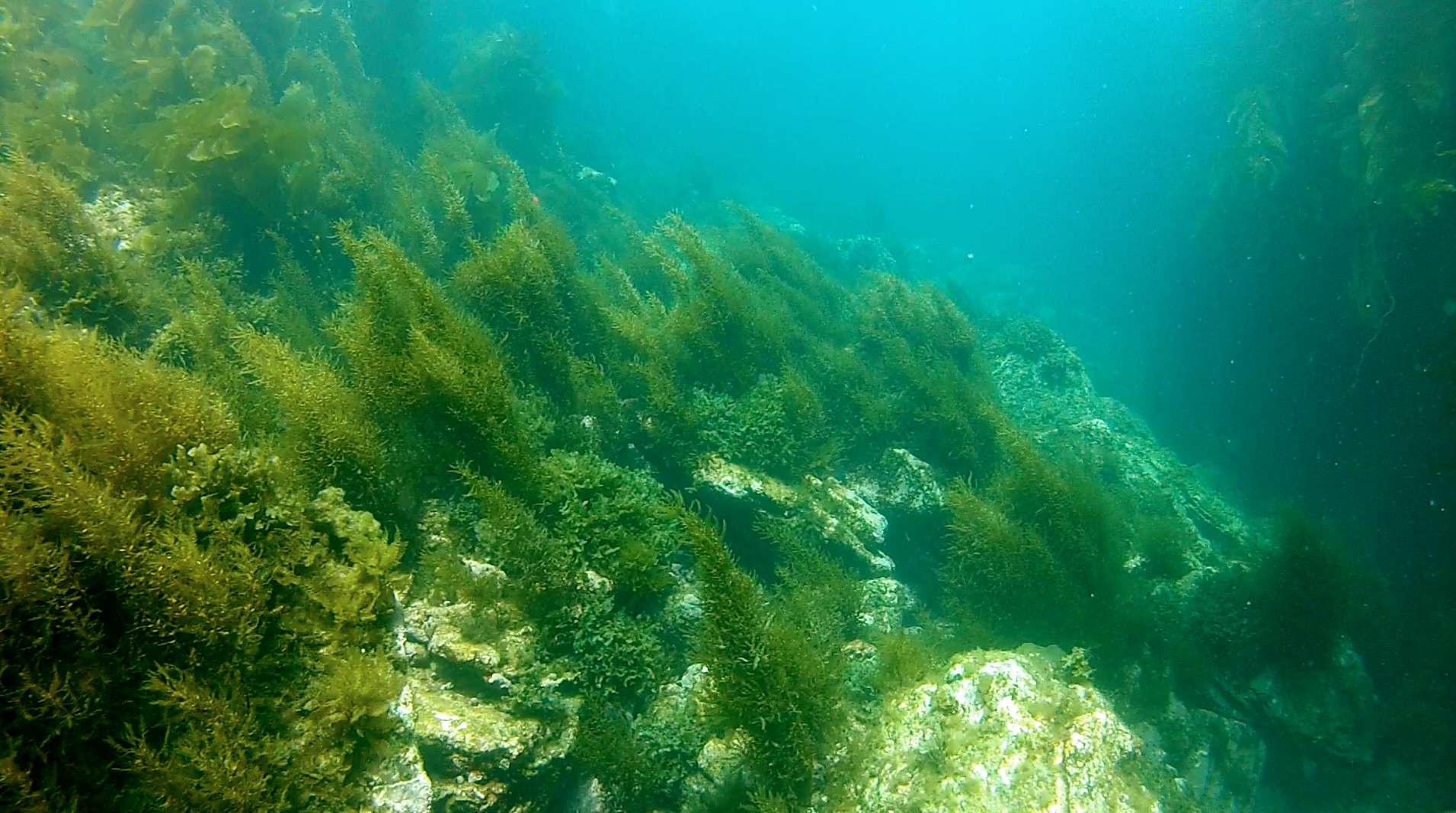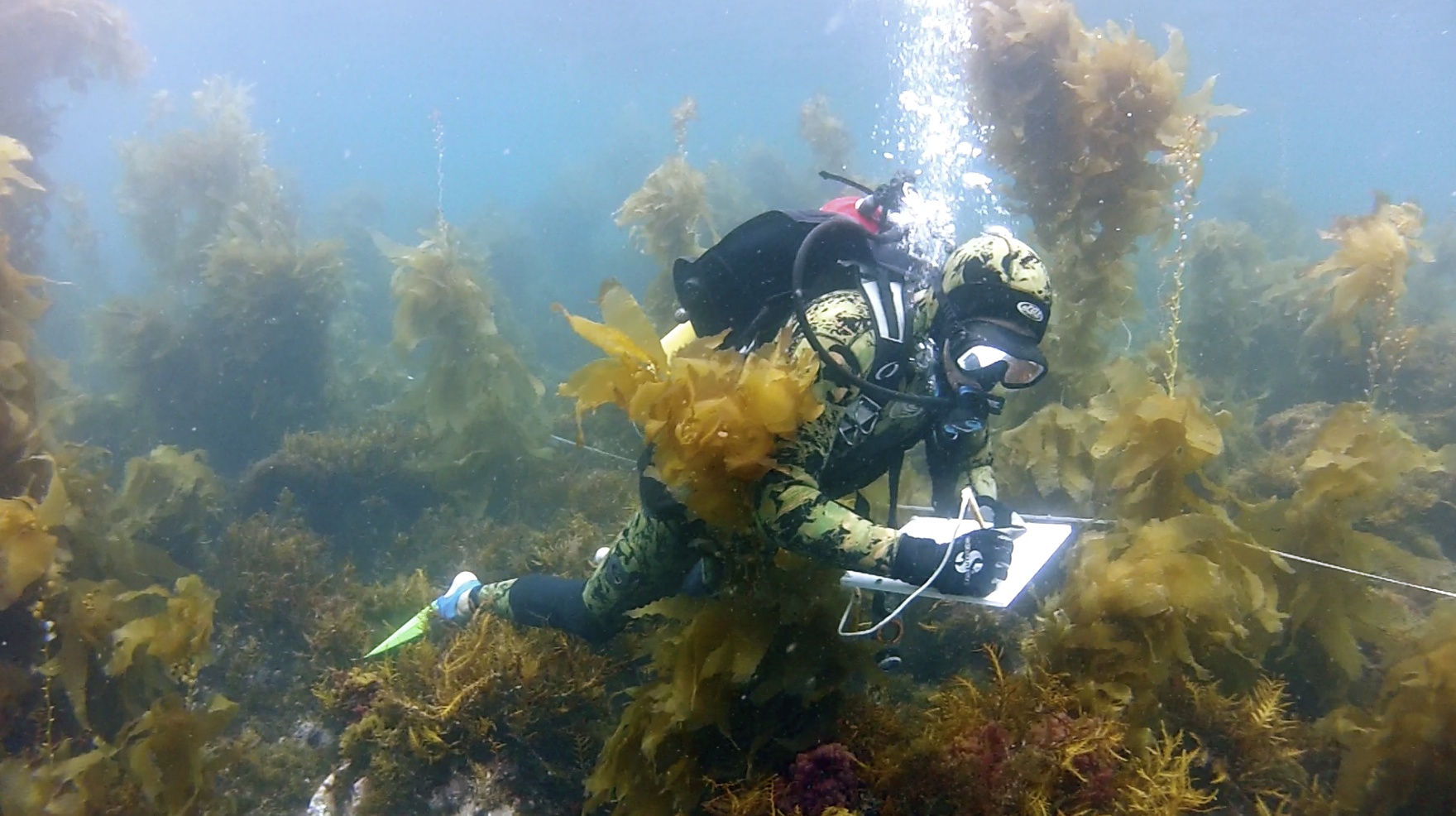By: Sam Ginther
Most people are familiar with terrestrial forests – the Amazon rainforest in South America, redwood forests of California, or the bamboo forests of Japan. Our world’s forests serve to feed and shelter numerous species, which we often harvest as natural resources.
Lesser-known, the marine forests found in temperate regions of the world such as California are in many cases equally important and productive. Large habitat forming kelp, Macrocystis pyrifera (giant kelp) dominates much of California’s rocky reefs, and has been shown to be beneficial to an array of fishes and invertebrates. Harvesting natural resources along California’s coast–like white seabass, kelp bass, and lobster–is a constant reminder to us that we rely heavily on a healthy kelp forest ecosystem.
Recently an invasive alga, Sargassum horneri, made its first appearance at Santa Catalina Island in 2006. Within a year it spread along the entire leeward coast, forming dense groves in numerous areas. S. horneri has structures that allow it to disperse great distances. And it is able to self fertilize, making this introduced species a formidable competitor against native algal species, which in turn impacts kelp forest inhabitants. A seasonal species that matures in the fall and winter, its effects on fishes and algae are not well known in California.
As a Master’s student at California State University, Northridge and a first-time USC Wrigley Institute Graduate Fellow, I aim to determine whether this invasive alga alters the native habitat significantly enough to affect fish community structure at Catalina Island. I am seeking to answer the questions: What types of fishes are impacted by the alga’s introduction? Are the sizes of fishes changing in impacted areas? What is it about S. horneri that causes any patterns I observe?
At numerous sites along the front side of Catalina Island I have completed observational surveys of both algae and fishes, which will enable me to determine whether habitats in these areas are changing during different seasonal stages of S. horneri, and whether these changes affect fish populations. Currently, I am working to set up S. horneri “removal plots” that will help me to compare and understand any patterns I observe during these seasonal surveys.
At this point, my 2014 Summer goals have almost been met; next, I intend to do similar work in the Fall, Winter, and Spring to gain deeper insight as to the impacts of S. horneri during the span of an entire year. My thesis work would not be possible without the use of SCUBA, and the Wrigley Institute of Environmental Studies staff who has been crucial to supporting my diving endeavors. Be on the look out for more posts about my work during the Fall, Winter, and Spring!




